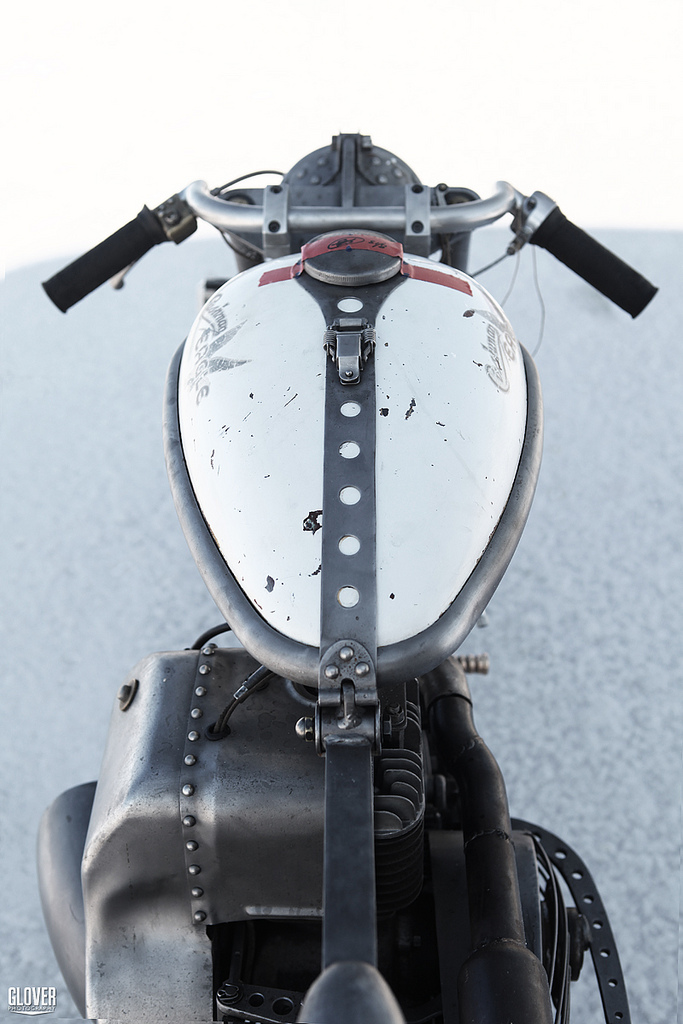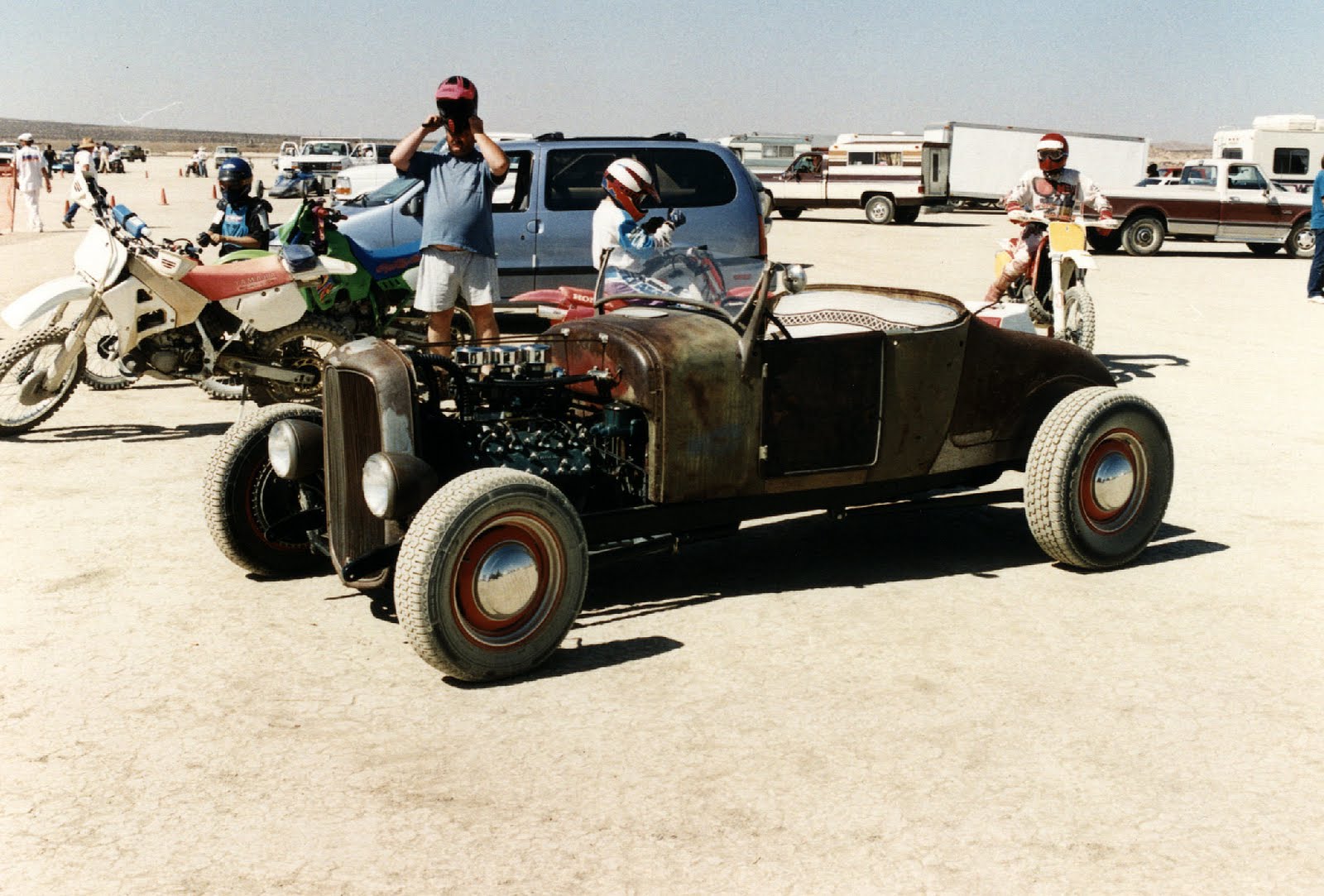Uncategorized
Bonneville’s Speed Week is Cancelled for Second year
SPEED WEEK 2015
HAS BEEN CANCELLED
The SCTA President/Race Director Bill Lattin & the BNI Chairman Roy Creel spent this morning (July 20th) on the salt. The most they could find was 2 1/4 miles of salt suitable for a safe race course. The rest of the salt flats
are either wet or wet and muddy. If the wet salt gets
dry, future events could be possible.
The Nugget will be refunding for reservations for one week
Racers at Bonneville Salt Flats Pepper Potash Firm With Complaints
WENDOVER, Utah—Are the Bonneville Salt Flats turning into the Bonneville Mud Flats?
Hot rodders who race on them think they are. The expanse of whiteness—hard, flat and fast—has shrunk, they say. The crystalline surface that smashers of land-speed records have made their hallowed ground for nearly a century seems slushy and thin.
The culprit, the hot rodders are convinced, is potash. The potash here is potassium chloride, a kind of salt. It is used in fertilizer, gunpowder and lethal injections.

Just south of the salt crust, across Interstate 80, there’s a single potash mine. The mine sucks brine from under the flats, extracts the tiny percentage of potash, and lets the rest dry out into waste heaps of table salt. So much salt has been removed, the racers believe, that the crust itself is disappearing.

“See our tire tracks?” Larry Volk was saying one windy July day. Mr. Volk, a 70-year-old hot rodder, is chairman of a group called Save the Salt. He had eased his Ford F-150 onto the flats in search of a course for Speed Week, where hundreds of vehicles of different sorts strain to go as fast as they can. This year’s events are to begin Aug. 13.
The tire tracks were light gray, the color of wet wallboard. “That’s mud,” said Mr. Volk. He got out and jabbed at the goop with a screwdriver. “All we want,” he said, “is the salt they take off put back on.”
South of I-80, the excavators of Intrepid Potash Inc., were digging at a moonscape of canals and man-made lakes. Its 48 workers ship 100,000 tons of potash a year at $500 a ton. From their side of the road, the salt crust’s plight doesn’t look so cut and dried.
Speed thrills, but to potash miners, potash thrills, too. “It supports life on Earth,” said Hugh Harvey, an Intrepid executive spending a day at the mine. He placed a potash granule on the tip of his tongue and grinned. “It lights up the mouth,” he said.
Intrepid hardly sells any of its salt waste. At $15 a ton, it isn’t worth the trouble. “To be perceived as helpful,” as Mr. Harvey puts it, the mine already pipes tons of it back onto the flats. The rest of the salt, standing in the rain, will dissolve back into the flats, Mr. Harvey says, in a few hundred years.

That isn’t fast enough for the hot rodders. They want the mine to pump a lot more salt a lot faster, and they want the owner of the salt flats—the federal government—to mandate it, now and forever.
After years of delay blamed on budgets, the Bureau of Land Management is soon to decide—possibly before Speed Week starts—and won’t say a thing yet. But two of the BLM’s geologists—who took the flats’ most up-to-date measurements—have just retired. Their calculations have left them asking the bed-rock question: Has the salt, in fact, been shrinking—or hasn’t it?

“What’s normal?” said Bill White, 68. He was standing on a berm in the warm wind, looking over the salt with his fellow geologist, Jim Kohler, who is 65. Said Mr. Kohler, “What’s back to normal?”

The flats have been around since Lake Bonneville dried up 14,000 years ago. The first speed record, set in 1914 by Teddy Tetzlaff in his Blitzen Benz, was followed by the first potash mine in 1917, a response to German gunpowder superiority in World War I.

Potash mining took off in the 1930s, hot rodding in 1949. The two coexisted until the 1960s, when the racers say they began having trouble finding a 13-mile straightaway of hard, thick salt.
Experts confirmed it. In 1988, the BLM, which is part of the Interior Department, said the crust was shrinking by 1% a year. In 1989, Save the Salt was formed. In 1997, after years of campaigning, it persuaded the potash miners to voluntarily put some salt back.
At the time, Reilly Chemical Inc. owned the mine. For five years, Reilly pumped brine under I-80 and onto the crust. Intrepid bought Reilly in 2004. While Mr. Harvey says it doubted the effectiveness of the pumping, Intrepid kept it up, just not so fast. In all, it reckons, the mine has dumped 8.2 million tons of salt onto the flats—enough to fill 81,176 hoppers in a train 911 miles long.
What happened? Not much.

Checking the old measurements, the geologists found errors. They recalibrated the old figures and matched them with their own new ones. It turned out that the flats hadn’t changed in 16 years. The crust was as thick in 2004—two feet, more or less—after years of pumping, as it was in 1988, after decades of mining.

As for the area of the flats, it fluctuates with rainfall, but its raceable surface still covered about 35 square miles.
The big surprise was that the brine pumped from the potash mine had no effect at all. It barely added to the salt’s thickness or expanse. It dribbled right through the crust and into the desert’s aquifer—a sea no amount of pumping will ever fill up.

“We just gather facts,” says Mr. White.
The racers don’t buy it. They’re certain the salt has gone mucky since Intrepid slowed down its pumps.
If the BLM won’t force the mine to keep pumping, they say they’ll go to Congress and the courts. They haven’t brought in any outside geologists, but they have brought in a lawyer, Russ Deane, to argue their case. “There’s a history of abuse on the flats,” he says.

The BLM’s retired geologists blame the weather. In dry years, they have noticed, race reports call the salt fast; in wet years, it’s slow.
Mr. Kohler and Mr. White were rolling over the flats in their Ford Explorer, leaving gray tire tracks. What about that mud? Doesn’t it mean that the crust has thinned to nothing?
“That’s a misconception,” said Mr. Kohler.

Mr. White stopped the car. Mr. Kohler got out, crouched and scraped at the ooze with a pick. “It’s not mud,” he said. “It’s surface gypsum, windblown and waterborne.” The damp gypsum was merely coating the crust’s surface. Mr. Kohler hacked into it with his pick, and a chunk of hard salt flew up.
“That’s the crust,” said Mr. White. “About two-feet thick here. I’m skeptical that’s ever going to disappear.”

Mr. Kohler stood and shaded his eyes in the glare. “Is this place doomed?” he said. “I don’t think so. The activities out here—mining or racing—won’t change it much. These salt flats will still have a salt crust. And they’ll still be flat.”

Last week, we reported that the 2015 Speed Week at the Bonneville Salt Flats was in danger of canceling due to the poor conditions of the salt surface after recent heavy rains. Over the weekend, Southern California Timing Association (SCTA) visited the site to scope out a usable race course for Speed Week. According to a source that is close with SCTA, 260 out of 338 Speed Week entries voted on a web survey that they would continue to race this year if a single three mile short course could be used. Unfortunately, with input from the Bureau of Land Management, the poor salt conditions lead SCTA to cancel the 2015 Speed Week. On SCTA’s Facebook page, they stated that, “The SCTA President/Race Director Bill Lattin & the BNI Chairman spent this morning (July 20th) on the salt. The most they could find was 2 1/4 miles of salt suitable for a safe race course. The rest of the salt flats are either wet or wet and muddy. If the wet salt gets dry, future events could be possible.” HOT ROD spoke to Bill Lattin, who told us that, “Going towards the big end of the big miles, it gets really rough. And before that, it’s too wet; a bunch of people are getting stuck.”




